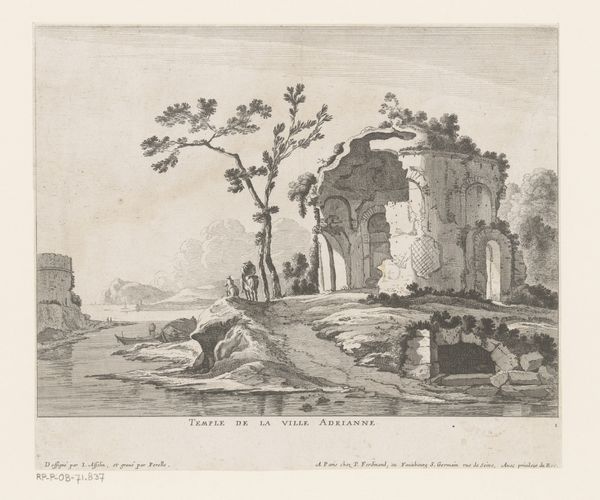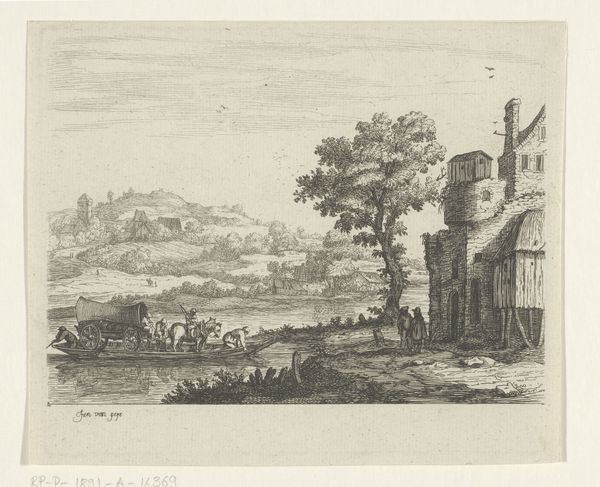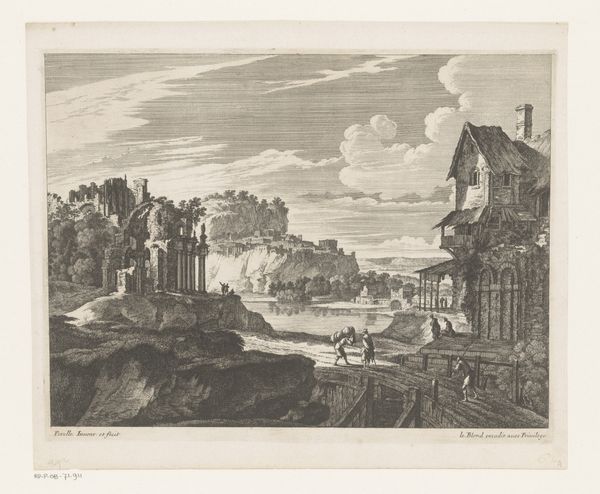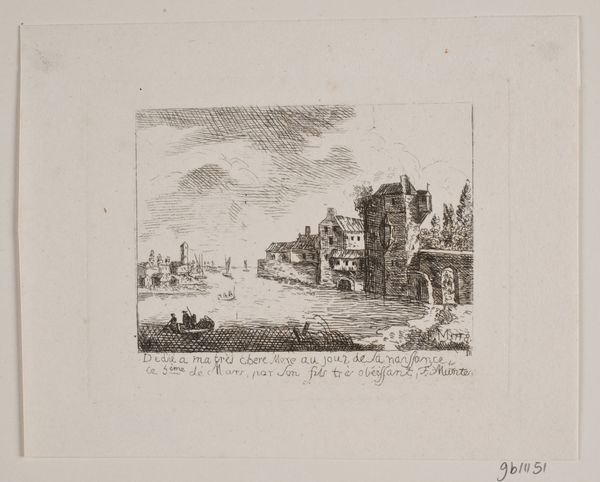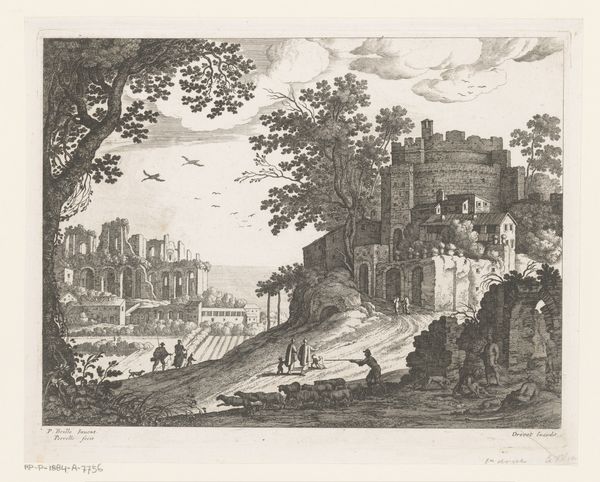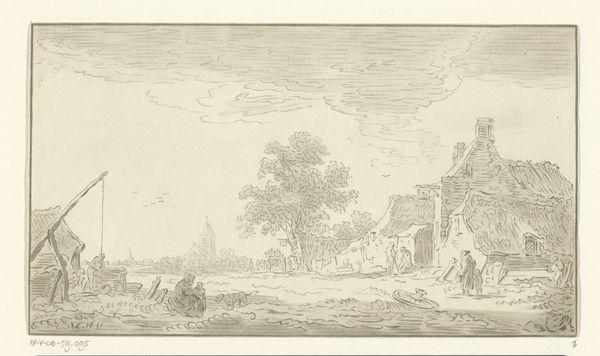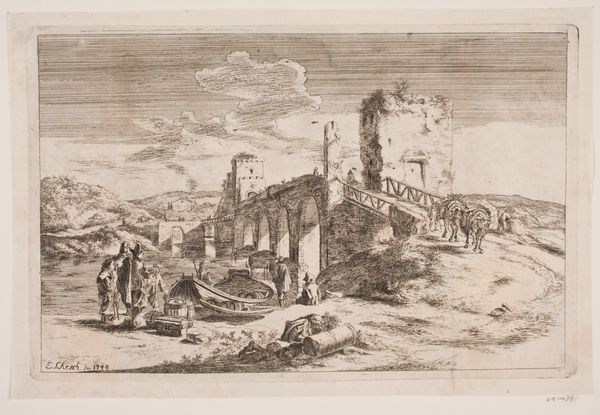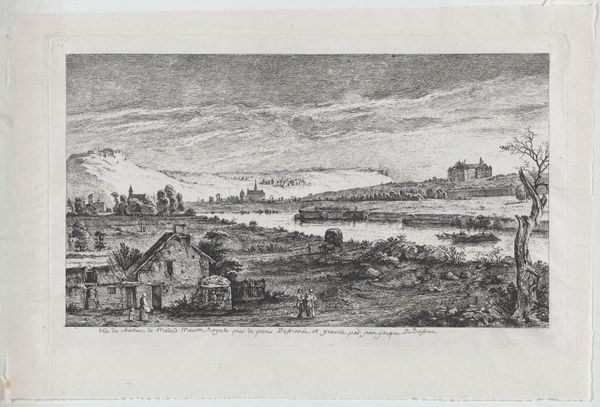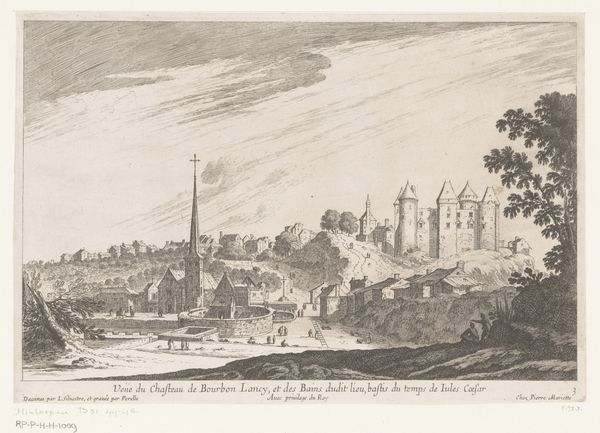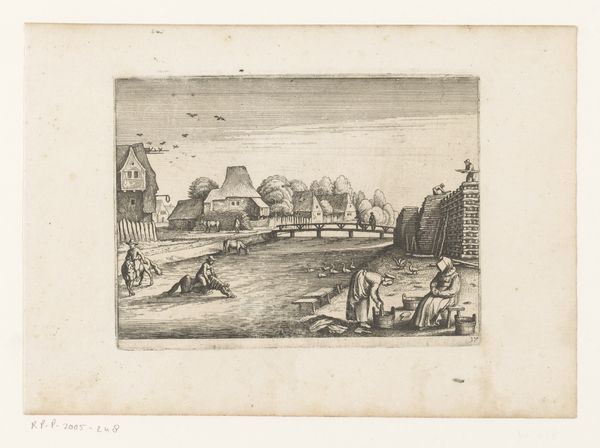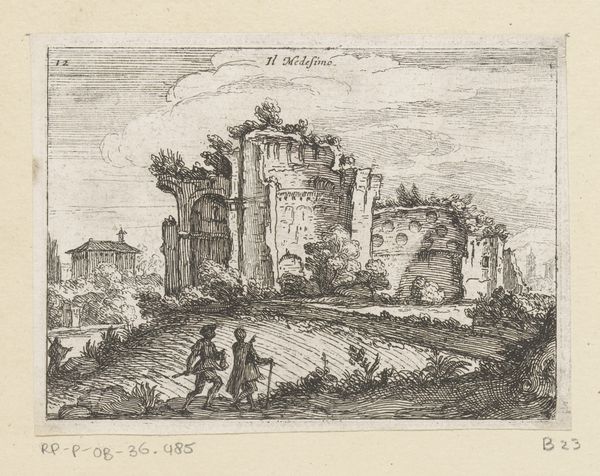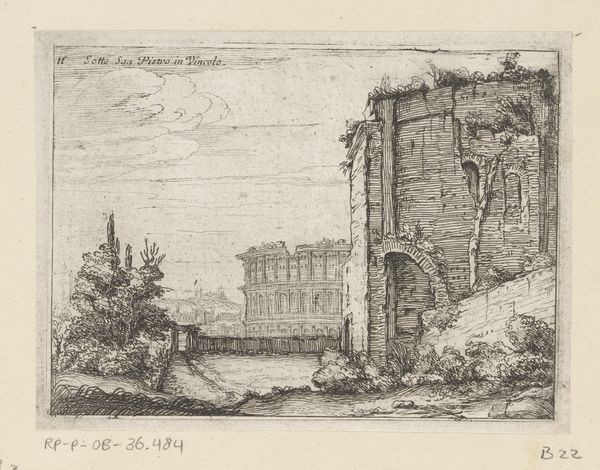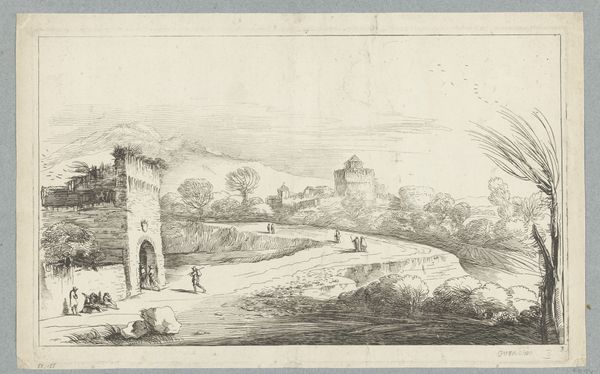
print, etching
#
baroque
# print
#
etching
#
old engraving style
#
landscape
#
etching
#
cityscape
Dimensions: height 123 mm, width 258 mm
Copyright: Rijks Museum: Open Domain
Curator: Let's discuss this print, “View of the Village and Bridge of Charenton.” It's an etching, made sometime between 1630 and 1661, attributed to Claude Goyrand and held at the Rijksmuseum. Editor: My immediate reaction is one of fascination with the etching's texture. The sheer volume of lines create a palpable atmosphere. Note the density around the bridge supports versus the relative lightness in the water reflections. The composition, anchored by the dilapidated architecture, has an almost mournful quality. Curator: The roughness certainly resonates with a materialist viewpoint. The scene captures a working landscape—people engaged in transport, construction or deconstruction of the building on the shores; resources being gathered. We see the impact of human labor on this environment. Editor: Agreed, though formally, that contrast—between the activity in the foreground and the still waters of the river—creates a beautiful tension. The use of perspective guides your eye from the hustle of daily life towards a more serene and distant horizon. The broken quality of the bridge itself makes the artwork's theme all the more intriguing. Curator: Absolutely, the etching medium is vital. Look at the skill required to render stone, water, sky—all from simple, varying etched lines. I think that highlights not just artistic intention but also the etcher's craft. One could really investigate how such prints were commodified and circulated. What audience was buying these landscapes and how did they consume them? Editor: Good questions. Zooming in on details—the figure carrying a load on his back, the crumbling masonry—they evoke an emotional response independent of social context. Consider how these individual figures contribute to the overall dynamic. A few strong, carefully rendered details anchor the impression that all things decline and crumble under time and history. Curator: True, but that "crumbling" suggests a possible narrative: Who built that bridge? Who allowed its decay? Its history intertwines with socio-economic transformations in Charenton. This decaying structure would not have existed outside this context, no? The material conditions shaped both the bridge, its decline, and Goyrand’s urge to depict it. Editor: Fair enough! However, if we just step back and observe, this is also an exquisitely composed piece of visual rhetoric: notice the delicate sky with its cloud patterns echoing the texture of the stone and thatch. Beyond representation of Charenton life, this work offers viewers a contemplative visual experience. Curator: Agreed! Thinking about the historical production, alongside the visual dynamics really adds something, no? Editor: Indeed! We've illuminated quite a bit. It is certainly food for thought.
Comments
No comments
Be the first to comment and join the conversation on the ultimate creative platform.
